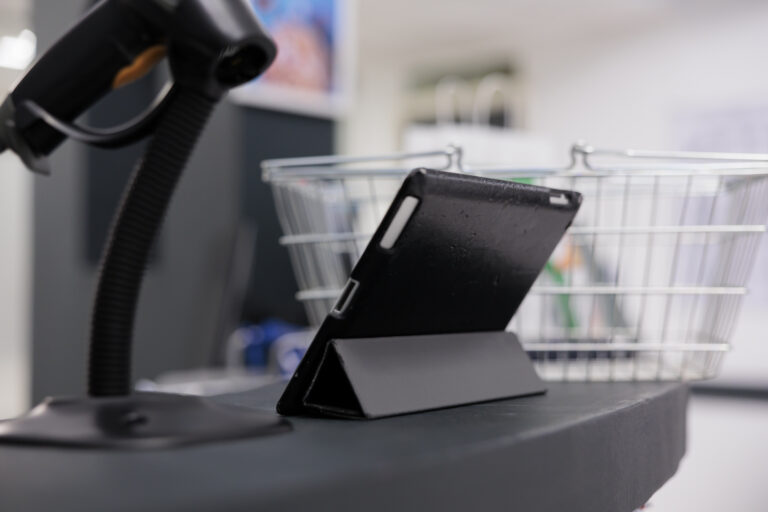Success Stories in Transit Settings
The transformative impact of digital receipts and smart touchpoints is already evident across the transportation sector. A major European airport hub that struggled with limited visibility into passenger spending, disjointed customer experiences across 85+ concessionaires, and underperforming high-value terminal areas implemented a comprehensive digital solution. The results were striking: a 28% increase in identified passenger transactions, €4.36 higher average spend per passenger using digital receipts, 22% improvement in underperforming areas, and an 18-point increase in customer satisfaction metrics.
Similarly, a high-speed rail network faced challenges with limited engagement between station and on-board services, poor visibility of passenger preferences, and underutilized premium offerings. After implementing digital receipts and smart touchpoints that connected the entire journey experience, they achieved a 34% increase in premium service upgrades, 23% higher food and beverage spend, and a 42% improvement in customer identification rate.
The Future of Transit Engagement
Looking ahead, the data foundation established through digital receipts and smart touchpoints enables increasingly sophisticated capabilities. Predictive journey orchestration can anticipate passenger needs, pre-emptively address service disruptions, and suggest optimal paths through terminals based on congestion. Integrated ecosystem experiences can create seamless connections between home-to-destination journey planning, intermodal transportation, connected hospitality experiences, and business travel expense management.
Sustainability initiatives also benefit from these digital capabilities. Transit operators can offer carbon footprint tracking across journey components, highlight sustainable vendors, enable paperless travel documentation, reduce food waste through predictive ordering, and optimize resources through better passenger flow management.# Transforming Transit: How Digital Receipts and Smart Touchpoints Are Revolutionizing the Travel Experience
The travel and hospitality sector stands at a pivotal moment. As passenger volumes return to and exceed pre-pandemic levels, transportation hubs face intensifying pressure to enhance operational efficiency while delivering seamless passenger experiences. Airports, train stations, ferry terminals, and other transit centers have become complex commercial ecosystems—combining transportation services with retail, dining, and other amenities that represent significant revenue opportunities.
Yet despite substantial investments in digital transformation, most transportation hubs still rely on legacy paper-based systems that create disconnected passenger experiences and miss valuable data capture opportunities. Digital receipts and smart touchpoints offer a compelling solution to bridge these gaps, transforming transactional moments into meaningful engagement opportunities while generating actionable insights that drive revenue and operational improvements.
The Unique Challenges of Transit Hubs
Transportation centers face distinct challenges that make traditional customer engagement approaches insufficient. Unlike traditional retail environments where building repeat business is straightforward, transit hubs serve primarily transient customers with infrequent visits, limited dwell time, and varied emotional states. The average airport visitor travels through the same airport only 2-4 times annually, with typically just 30-90 minutes of discretionary time in terminals. These factors create narrow windows for engagement and make traditional loyalty programs less effective.
Transit hubs also operate in complex environments with multiple stakeholders and systems. Transportation providers, retailers, food and beverage concessionaires, security agencies, and facility management teams all coexist within the same physical space, creating siloed data environments where passenger information rarely flows between systems. This complexity limits opportunities for personalization and operational insights.
At the same time, transportation centers increasingly depend on non-transportation revenue. Retail and F&B concessions now contribute 40-60% of airport revenue, with advertising, parking, and other services providing essential supplementary income. This creates growing pressure to maximize yield per square meter amid intensifying competition from alternative transport modes.
Many transportation hubs, particularly airports, have begun viewing themselves as shopping and dining destinations that can attract local customers beyond travelers. While these local visitors represent a smaller percentage of total visitors (typically 8-12% of weekend retail and dining revenue at European airports), they offer a rare opportunity to build traditional loyalty relationships in an otherwise transient environment.
The Digital Receipt Opportunity
Digital receipts transform mundane transactions into powerful data capture and engagement opportunities:
Unified Customer View
By implementing digital receipts across concessions, transit hubs can:
- Create a single view of passenger spending behavior across retailers, restaurants, and services
- Link travel information with commercial transactions
- Understand dwell time utilization and passenger flow patterns
- Connect pre-travel, in-terminal, and post-travel touchpoints
According to the International Air Transport Association (IATA), only 13% of airports have achieved this level of passenger data integration[4]—representing a significant competitive advantage for early adopters.
Enhanced Passenger Experience
Digital receipts deliver immediate passenger benefits:
- Simplified expense management for business travelers
- Reduced paper waste aligning with sustainability expectations
- Convenient transaction records for warranty and return purposes
- Integration with travel loyalty programs
- Personalized recommendations for services and amenities
- Automated language localization based on travel origin or preference
This last point is particularly valuable in international transit settings, where passengers appreciate receiving receipts and communications in their native language. A major European hub implementing automatic receipt localization in 12 languages reported a 26% higher digital engagement rate among international travelers.[6]
Operational Intelligence
The data captured through digital receipts provides actionable insights:
- Optimize staffing based on actual transaction patterns
- Refine concession mix to match passenger preferences
- Improve space utilization based on traffic and dwell time data
- Enhance revenue management with real-time yield information
- Develop evidence-based investment decisions
These insights allow for operational adjustments that can increase non-aeronautical revenue by 15-22% according to ACI World’s Commercial Strategy findings[7].
Smart Touchpoints: Beyond Digital Receipts
refive’s smart touchpoint technology extends engagement capabilities beyond the transaction moment, creating opportunities for timely, relevant interaction throughout the passenger journey. Location-specific information through QR codes, real-time service updates, interactive wayfinding assistance, and seamless loyalty integration across concessionaires all contribute to a more satisfying transit experience. These contextual interactions have been shown to increase passenger satisfaction scores by 12-18 points on standard industry metrics.
With passenger consent, smart touchpoints enable personalized journey assistance tailored to individual needs and preferences. Pre-arrival recommendations based on flight or train timing, in-terminal navigation assistance, targeted promotions based on known preferences, post-journey follow-up, and special assistance triggers for passengers with specific needs can transform what was once a purely functional experience into something more memorable and satisfying. A European airport implementing similar personalization capabilities reported a 27% increase in passenger spending and a 34% improvement in satisfaction ratings.
The commercial impact of smart touchpoints is equally compelling. Transit operators can increase average transaction value through timely offers, improve conversion rates with contextual promotions, drive traffic to underutilized concessions, create new advertising inventory for brand partners, and enable premium services discovery and booking. For local customers, specialized loyalty programs can foster repeat visits and higher spending. refive’s transit hub implementations have demonstrated average increases of 8-14% in concession revenue following smart touchpoint deployment.

Conclusion: The Competitive Imperative
As competition intensifies among transportation hubs, passenger experience and commercial performance have become critical differentiators. Digital receipts and smart touchpoints offer a proven, scalable approach to addressing both priorities simultaneously.
By transforming transactional moments into engagement opportunities and harvesting actionable data from routine interactions, transit operators can create more satisfying passenger experiences while driving significant revenue improvements. For the small but growing segment of local customers who use transportation hubs as shopping and dining destinations, these technologies also enable traditional loyalty development that was previously impossible with purely transient visitors.
The result is a more sustainable business model that balances operational excellence with commercial success, serving both travelers and local visitors with personalized, frictionless experiences.
Contact refive today to learn how our specialized transit and transportation solutions can transform your passenger experience while driving measurable commercial results.
References
[1] International Air Transport Association (IATA). (2023). Global Passenger Survey. Retrieved from IATA Research Publications.
[2] Airports Council International (ACI). (2023). Airport Dwell Time and Commercial Performance Analysis. Industry research report.
[3] Airports Council International (ACI). (2024). Airport Economics Report. Retrieved from ACI World Data Center.
[4] European Airport Retail Association. (2023). Local Visitor Impact Study. Industry research report.
[5] International Air Transport Association (IATA). (2023). Digital Transformation in Airports Survey. Industry research report.
[6] refive & Transport Research Institute. (2023). Traveler Preferences Study. Joint research study.
[7] Airports Council International (ACI). (2023). Commercial Strategy Findings. Retrieved from ACI Business Suite.
[8] refive. (2023). Impact of Smart Touchpoints on Passenger Experience. Internal research document.
[9] European Airport Review. (2023). Case Study: Personalization Impact at Major Hub. Industry publication.
[10] refive. (2024). Transit Implementation Performance Analysis 2023-2024. Internal research document.









